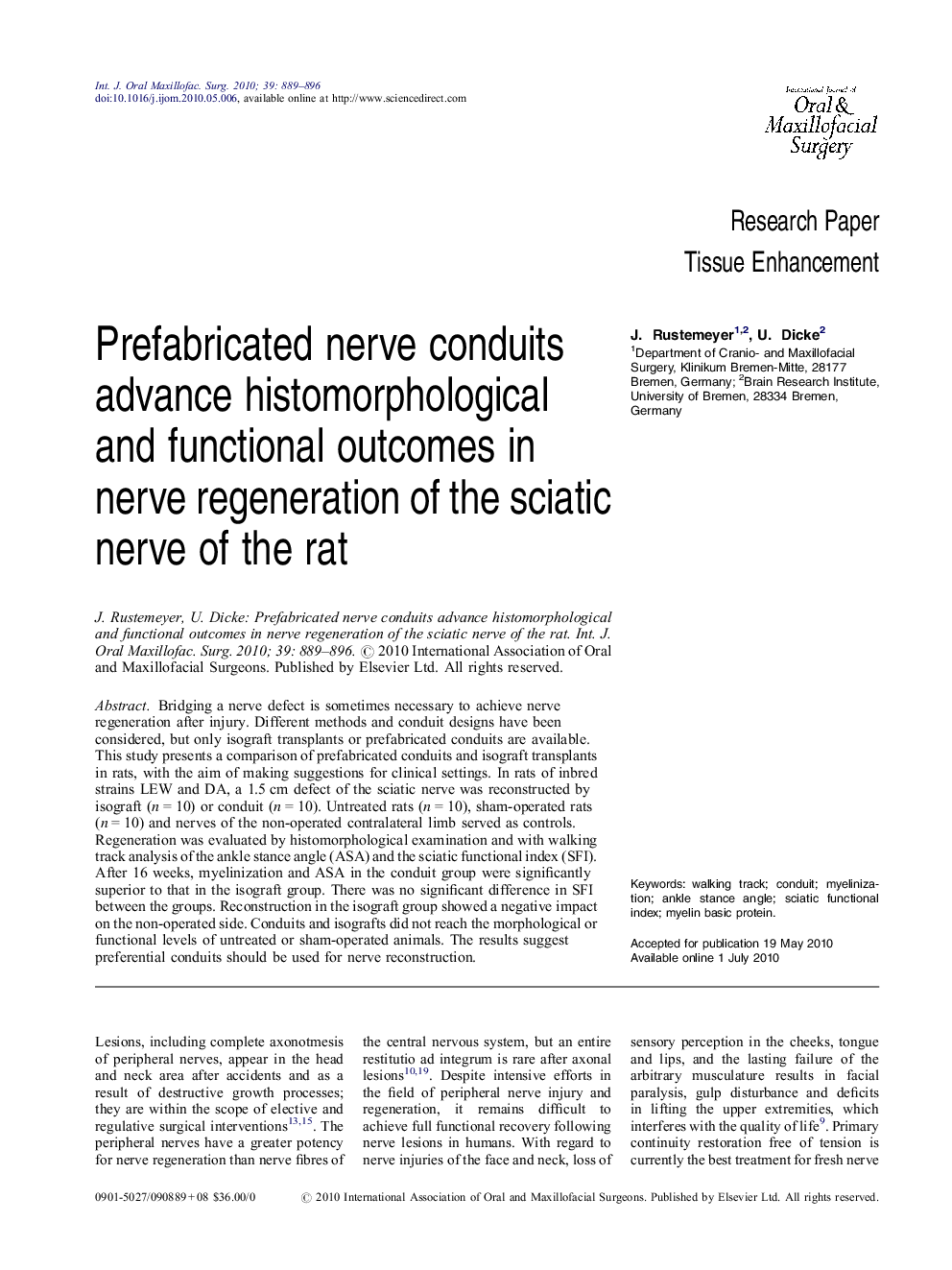| Article ID | Journal | Published Year | Pages | File Type |
|---|---|---|---|---|
| 3133994 | International Journal of Oral and Maxillofacial Surgery | 2010 | 8 Pages |
Bridging a nerve defect is sometimes necessary to achieve nerve regeneration after injury. Different methods and conduit designs have been considered, but only isograft transplants or prefabricated conduits are available. This study presents a comparison of prefabricated conduits and isograft transplants in rats, with the aim of making suggestions for clinical settings. In rats of inbred strains LEW and DA, a 1.5 cm defect of the sciatic nerve was reconstructed by isograft (n = 10) or conduit (n = 10). Untreated rats (n = 10), sham-operated rats (n = 10) and nerves of the non-operated contralateral limb served as controls. Regeneration was evaluated by histomorphological examination and with walking track analysis of the ankle stance angle (ASA) and the sciatic functional index (SFI). After 16 weeks, myelinization and ASA in the conduit group were significantly superior to that in the isograft group. There was no significant difference in SFI between the groups. Reconstruction in the isograft group showed a negative impact on the non-operated side. Conduits and isografts did not reach the morphological or functional levels of untreated or sham-operated animals. The results suggest preferential conduits should be used for nerve reconstruction.
